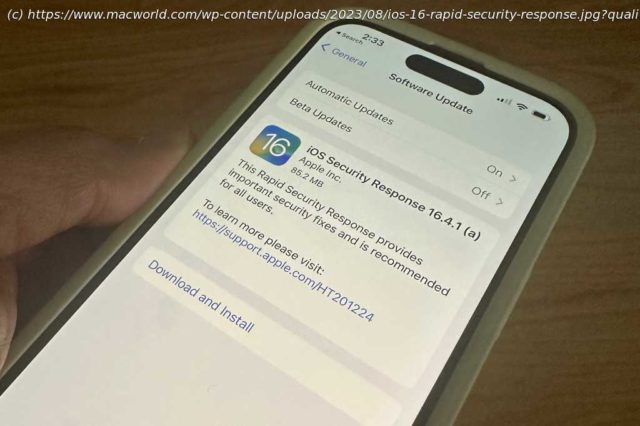Help is at hand if one of Apple’s urgent security fixes has caused more harm than good.
Apple’s Rapid Security Responses can help push out software fixes more quickly than the traditional operating system (OS) update process. But they can occasionally cause entirely new problems, and you may wish to undo the damage by removing the update. In this article, we explain how to remove an Apple Rapid Security Response update that may be causing problems.What’s a Rapid Security Response?
In May 2023, Apple rolled out the first of a new kind of software update: the Rapid Security Response. Designated by parenthetical letters rather than version numbers, these are designed as small, targeted patches to fix urgent iPhone, iPad, and Mac vulnerabilities without having to wait for a larger OS update.
“[Rapid Security Responses] deliver important security improvements between software updates,” Apple explains. “They may also be used to mitigate some security issues more quickly, such as issues that might have been exploited or reported to exist ‘in the wild’.”Why would you want to remove a Rapid Security Response?
The concept outlined above is a good idea in principle, and generally speaking, you shouldn’t remove them. They are designed to fix urgent problems and are beneficial… most of the time.
However, the system has experienced some teething troubles. This may be related to the speed and urgency that are so fundamental to the way it works: full OS updates go through multiple rounds of beta testing before being rolled out, whereas Rapid Security Responses are designed to bypass this long-winded process. In theory that shouldn’t be a problem, because they are so much more limited in their scope than a full OS update, but bugs can slip through.
In July, Apple used Rapid Security Response to push out “(a)” updates for iOS 16.5.1, iPadOS 16.5.1, and macOS 13.4.1, but these were quickly found to cause a new problem, and one that was arguably bigger than the one they were designed to fix. (How bad was it? That depends on who you ask. Apple said the updates “might prevent some websites from displaying properly.
Home
United States
USA — software How to remove a Rapid Security Response update from your iPhone or...






